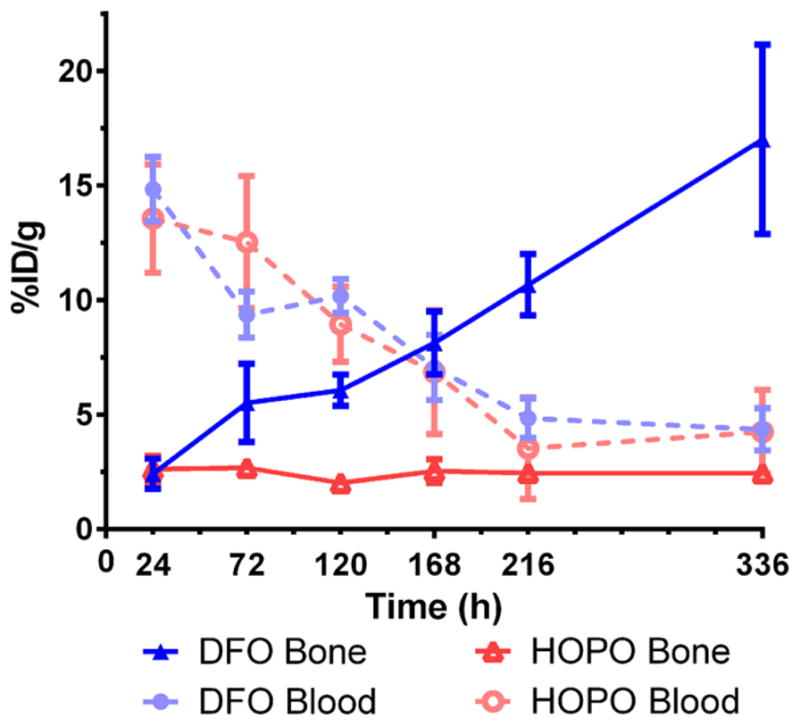Figure 6.

Comparison of the levels of radioactivity in the blood and bone of BT474 tumor-bearing female, athymic nude mice after injection of either 89Zr-HOPO-trastuzumab (red) or 89Zr-DFO-trastuzumab (blue) (0.59–0.74 MBq [16–20 μCi] in 200 μL 0.9% sterile saline). While the activity in the blood starts high and decreases over time, the activity in the bone is very different for the two compounds. The 89Zr-HOPO-trastuzumab mice show a near-constant level (~2.5%ID/g) of activity in the bone which never exceeds the level of activity remaining in the blood. The 89Zr-DFO-trastuzumab mice show an increasing amount of radioactivity in the bone over time, which far surpasses the level in the blood and suggests release of the 89Zr4+ cation in vivo which is known to preferentially accumulate in the bone.
